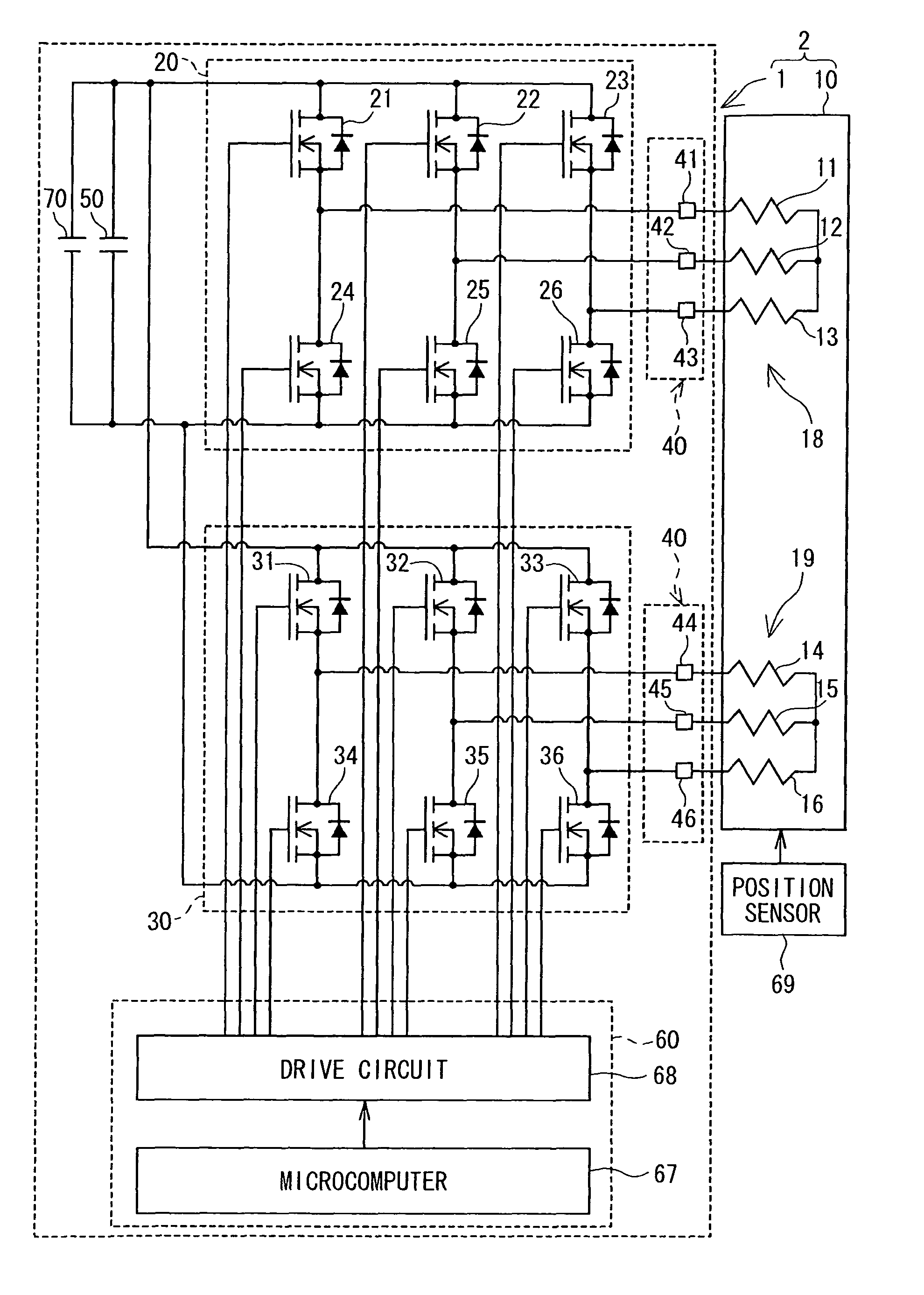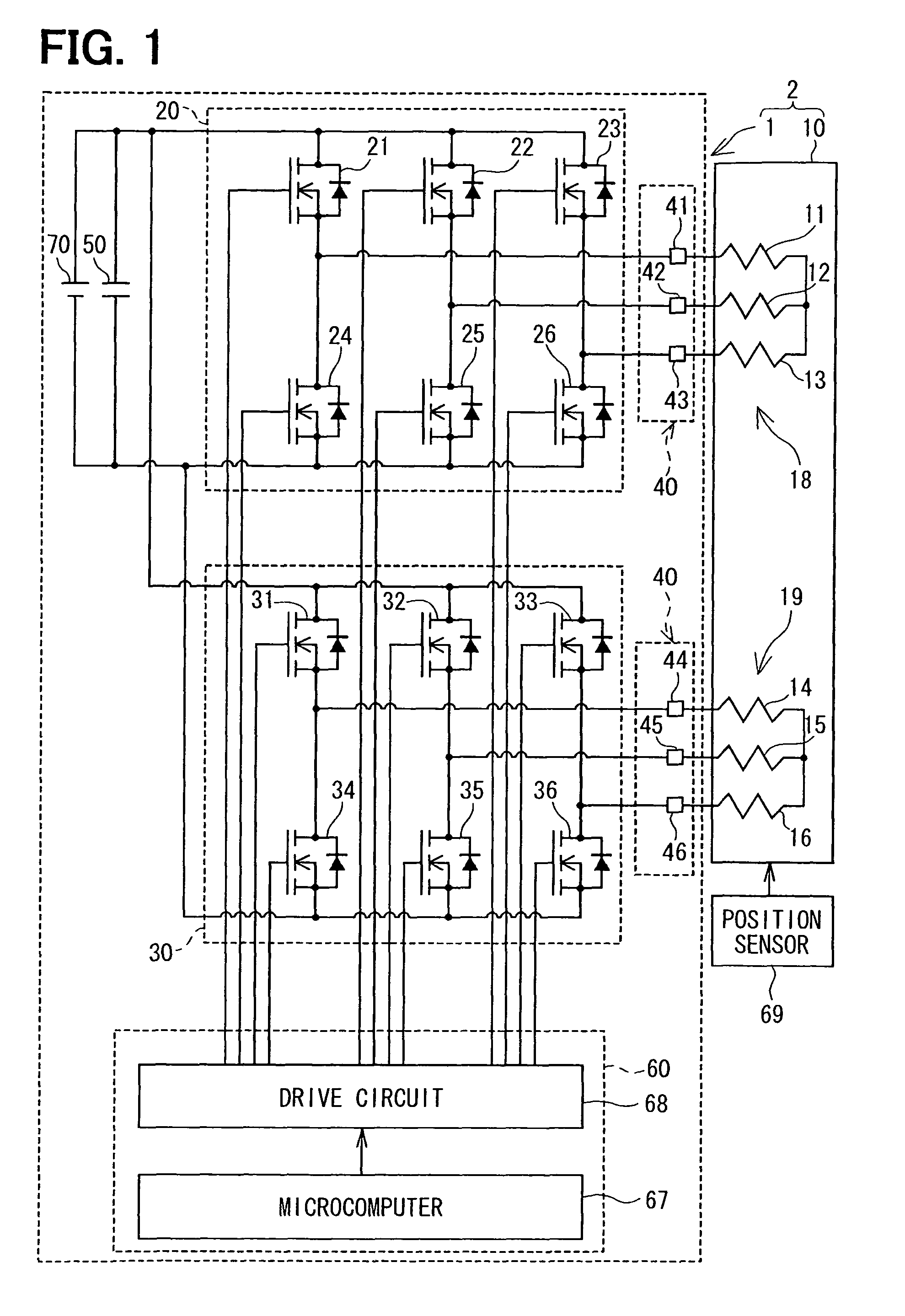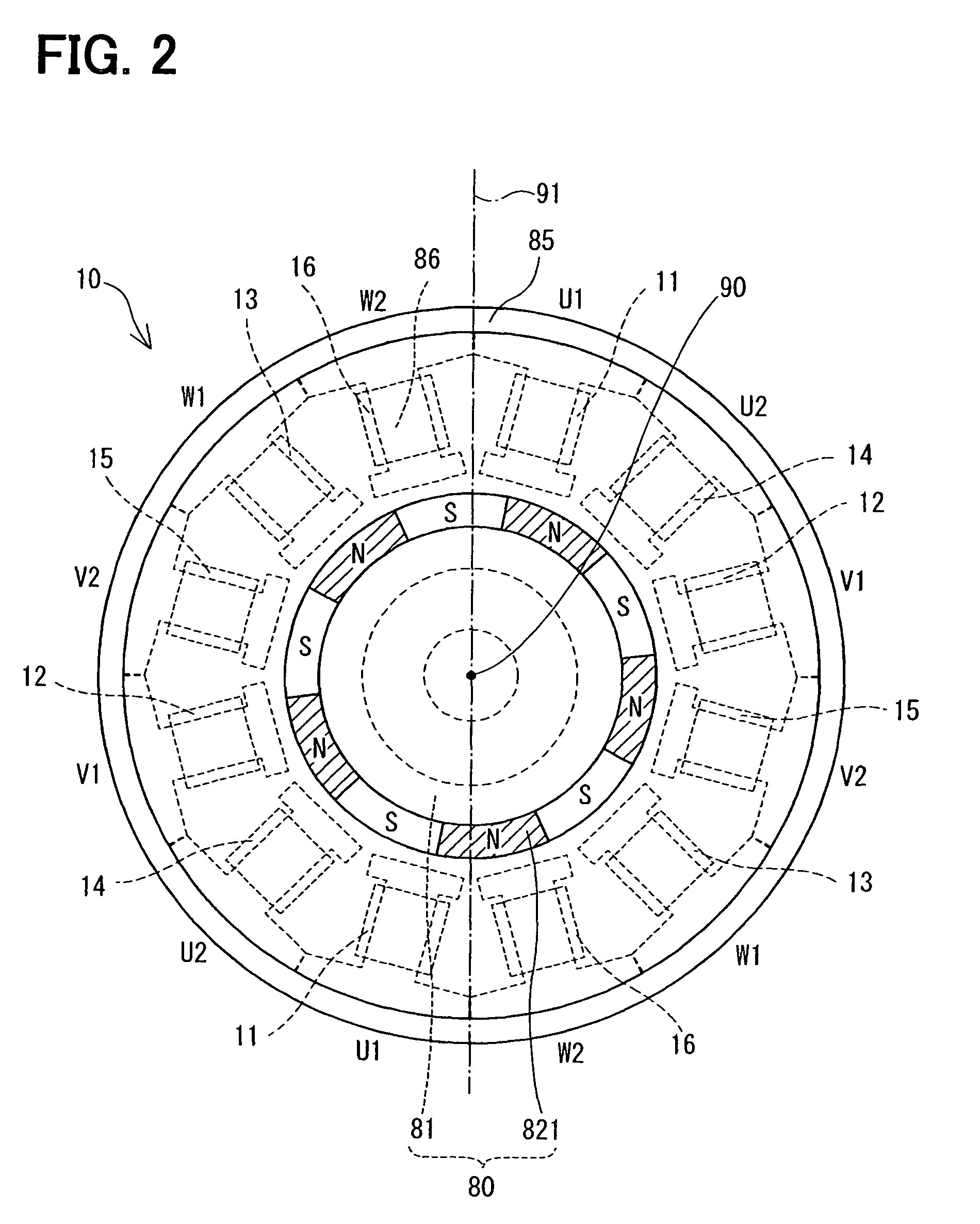Electric power converter, driving apparatus and electric power steering apparatus
a technology of driving apparatus and electric power steering, which is applied in the direction of electric generator control, dynamo-electric converter control, dynamo-electric gear control, etc., can solve the problems of increasing ripple electric current, noise and heat generation of capacitors, and deteriorating controllability of electric current by inverters, so as to reduce ripple electric current of capacitors and increase the adjustment range of switching on-off timing
- Summary
- Abstract
- Description
- Claims
- Application Information
AI Technical Summary
Benefits of technology
Problems solved by technology
Method used
Image
Examples
first embodiment
(First Embodiment)
[0044]Referring to FIG. 1, an electric power converter 1 is provided to control driving of a three-phase motor 10 as a rotary electric machine. For example, the electric power converter 1 and the motor 10 form a driving apparatus 2, which is applied to an electric power steering apparatus to assist steering operation of a vehicle.
[0045]The electric power converter 1 includes two systems (#1 and #2) of inverter units, and drives two systems of winding wire combinations (i.e., groups) of the motor 10. Here, the term system is used to indicate a unit, which is a combination (i.e., a group) of one inverter unit and three-phase winding wires corresponding to one inverter unit.
[0046]The inverter unit and a group of winding wires in the first system (#1) are respectively designated as a first inverter unit 20 and a first winding wire group 18, and the inverter unit and a group of winding wires in the second system (#2) are respectively designated as a second inverter unit...
second embodiment
(Second Embodiment)
[0122]The PWM control in the second embodiment is described with reference to FIGS. 13A to 14B. In the second embodiment, the modulation processor 653 performs the flatbed two-phase modulation process (cf. FIG. 9).
[0123]FIGS. 13A and 13B illustratively show as a comparative example against the second embodiment, in which the first duty instruction signal D21 and the second duty instruction signal D22 respectively having undergone the flatbed two-phase modulation process have the same phase.
[0124]The first duty instruction signal D21 and the second duty instruction signal D22 have the same amplitude and have the same phase, and the minimum values Dmin21, Dmin22 are substantially equal to the minimum value Rmin of the allowable duty output range, and the maximum values Dmax21, Dmax22 are only slightly greater than the center output value Rc. Further, a timing when the first duty instruction signal D21 takes the maximum value Dmax21 and a timing when the second duty ...
third embodiment
(Third Embodiment)
[0138]In the third embodiment, the modulation processor 653 performs the flatbed two-phase modulation process (cf. FIG. 10).
[0139]FIGS. 15A and 15B illustratively show as a comparative example against the third embodiment, in which the first duty instruction signal D31 and the second duty instruction signal D32 respectively having undergone the flattop two-phase modulation process have the same phase.
[0140]The first duty instruction signal D31 and the second duty instruction signal D32 have the same amplitude and have the same phase, and the minimum values Dmin31, Dmin32 are substantially equal to the maximum value Rmax of the allowable duty output range, and the minimum values Dmin31, Dmin32 are only slightly smaller than the center output value Rc. Further, a timing when the first duty instruction signal D31 takes the minimum value Dmin31 and a timing when the second duty instruction signal D32 takes the minimum value Dmin32 overlap at every 60°.
[0141]FIG. 15B is...
PUM
 Login to View More
Login to View More Abstract
Description
Claims
Application Information
 Login to View More
Login to View More - R&D
- Intellectual Property
- Life Sciences
- Materials
- Tech Scout
- Unparalleled Data Quality
- Higher Quality Content
- 60% Fewer Hallucinations
Browse by: Latest US Patents, China's latest patents, Technical Efficacy Thesaurus, Application Domain, Technology Topic, Popular Technical Reports.
© 2025 PatSnap. All rights reserved.Legal|Privacy policy|Modern Slavery Act Transparency Statement|Sitemap|About US| Contact US: help@patsnap.com



